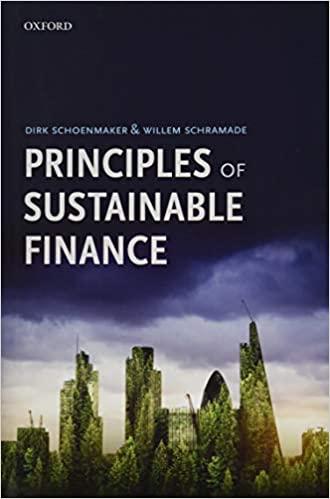Question
1a.You are deciding between two mutually exclusive investment opportunities. Both require the same initial investment of $10.4 million. Investment A will generate $2.05 million per
1a.You are deciding between two mutually exclusive investment opportunities. Both require the same initial investment of $10.4 million. Investment A will generate $2.05 million per year (starting at the end of the first year) in perpetuity. Investment B will generate $1.5 million at the end of the first year, and its revenues will grow at 2.5% per year for every year after that. a. Which investment has the higher IRR? (Round to the nearest integer.) b. Which investment has the higher NPV when the cost of capital is 6.6%? c. In this case, for what values of the cost of capital does picking the higher IRR give the correct answer as to which investment is the best opportunity?
1b.Your firm spends $500,000 per year in regular maintenance of its equipment. Due to the economic downturn, the firm considers forgoing these maintenance expenses for the next 3 years. If it does so, it expects it will need to spend $2.2 million in year 4 replacing failed equipment. a. What is the IRR of the decision to forgo maintenance of the equipment? (Round to two decimal places.) b. Does the IRR rule work for this decision? c. For what costs of capital (COC) is forgoing maintenance a good decision?
1c.Bill Clinton reportedly was paid an advance of $10 million to write his book My Life.The book took three years to write. In the time he spent writing, Clinton could have been paid to make speeches. Given his popularity, assume that he could earn $8.43 million a year (paid at the end of the year) speaking instead of writing. Assume his cost of capital is 9.3% per year. a. Based on the above cash flows, how many IRRs does the opportunity have? Does the IRR rule give the right answer in this case? b. Assume now that once the book is finished, it is expected to generate royalties of $4.51million in the first year (paid at the end of the year) and these royalties are expected to decrease at 30% per year in perpetuity. How many IRRs are there in this case? Does the IRR rule work in this case?
PLEASE ANSWER ENTIRE QUESTION. NO NEED TO SHOW WORK. THANK YOU!
Step by Step Solution
There are 3 Steps involved in it
Step: 1

Get Instant Access to Expert-Tailored Solutions
See step-by-step solutions with expert insights and AI powered tools for academic success
Step: 2

Step: 3

Ace Your Homework with AI
Get the answers you need in no time with our AI-driven, step-by-step assistance
Get Started


